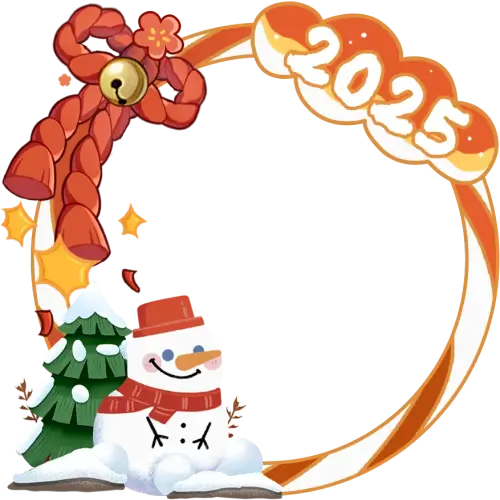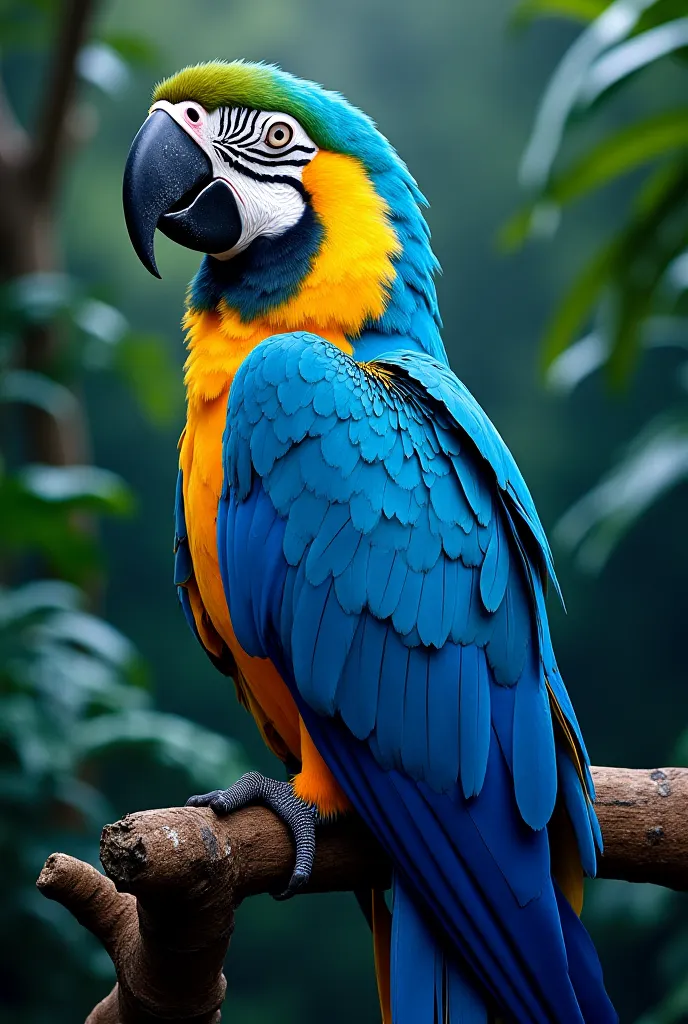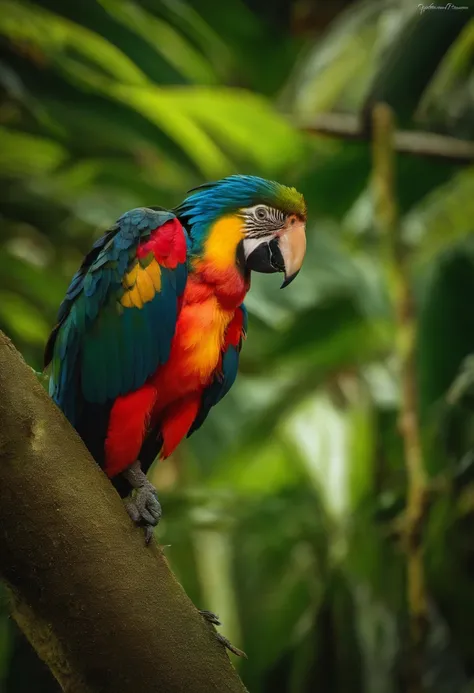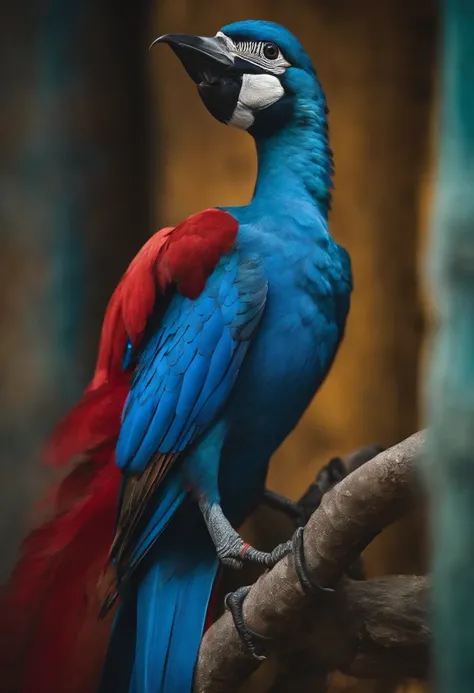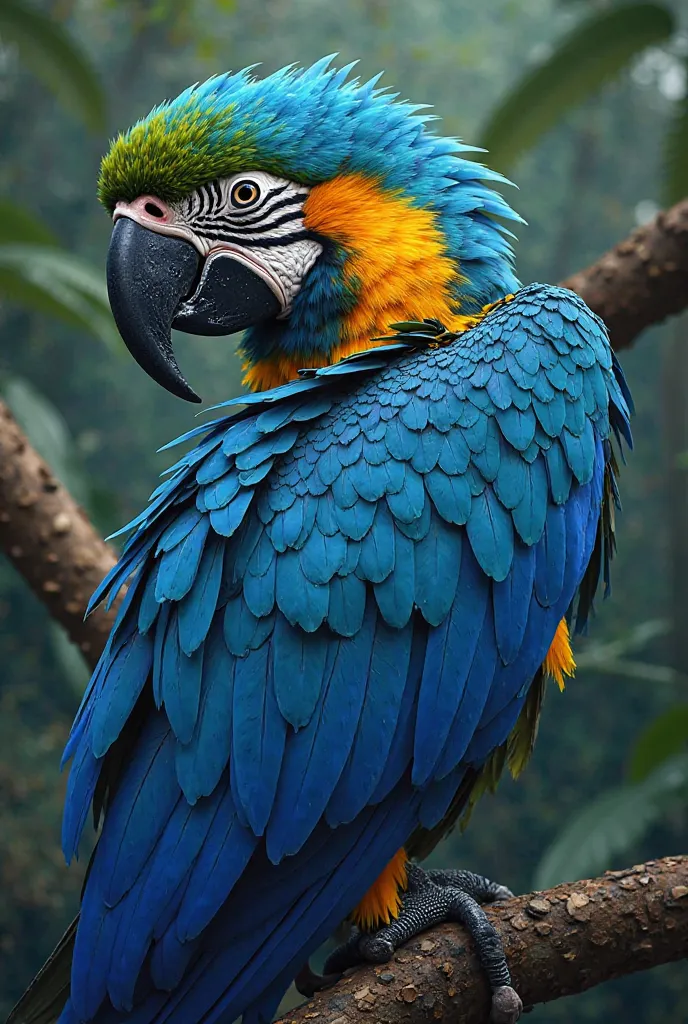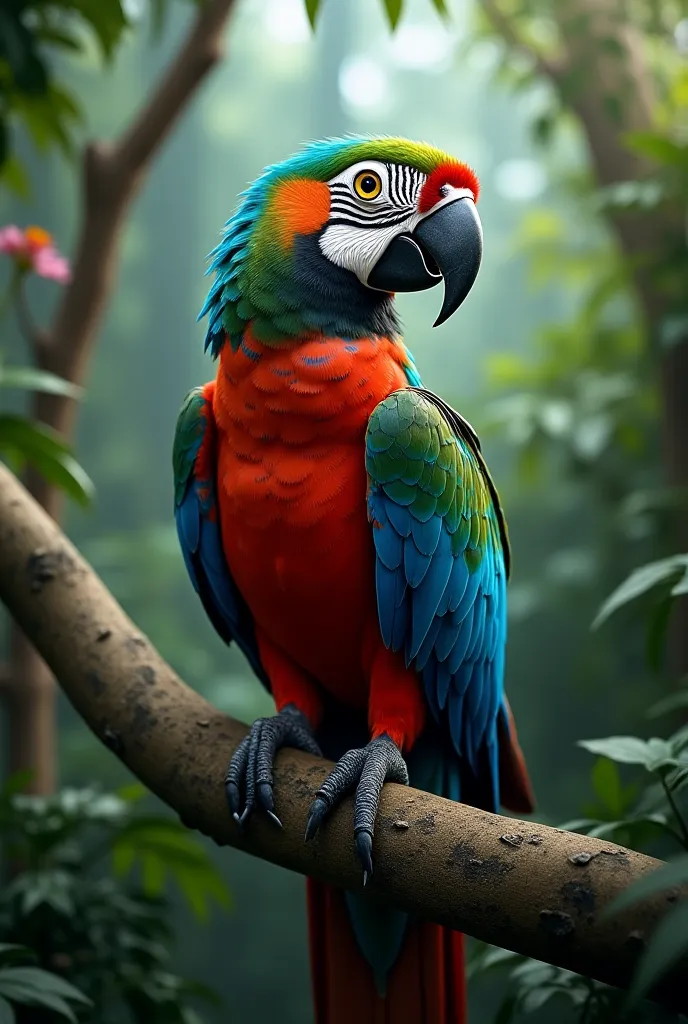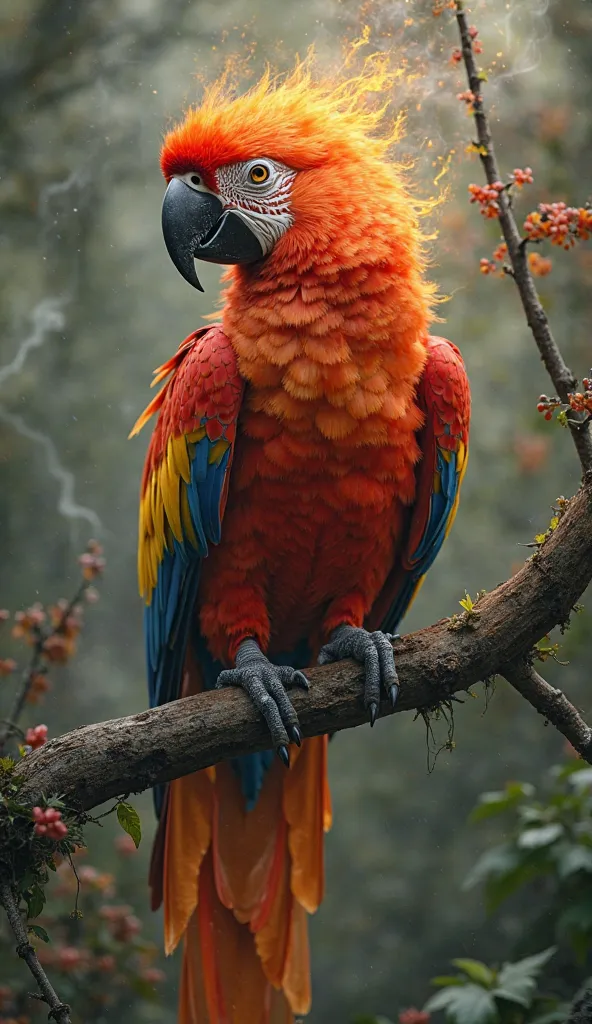### Evolution of the Flag Macaw: the "Marine Macaw" #### **Environment and Sele
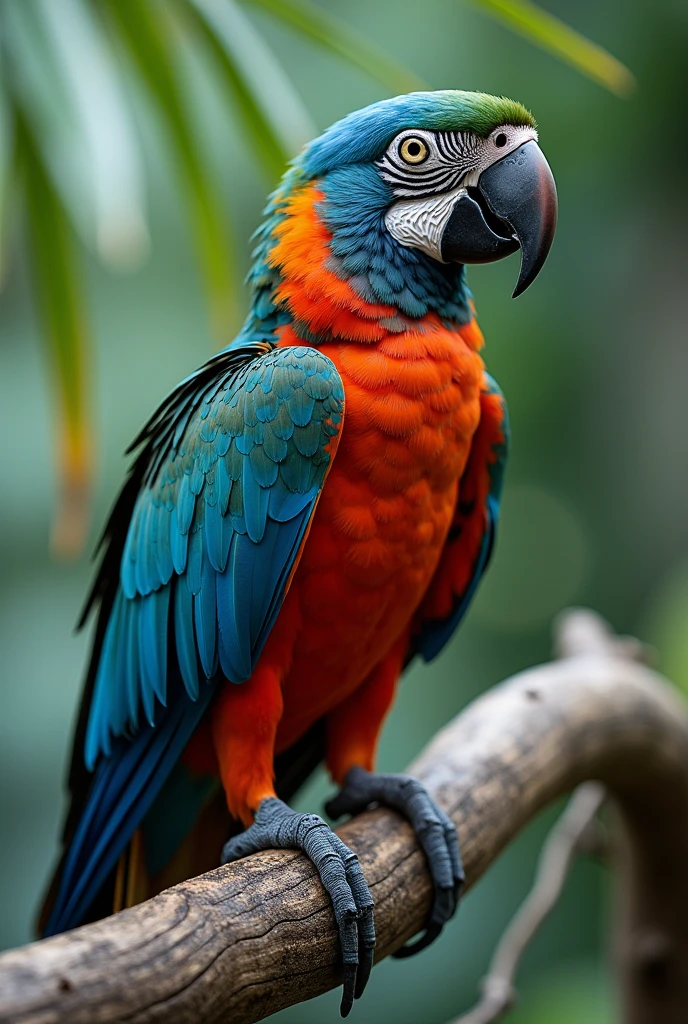
### Evolution of the Flag Macaw: the "Marine Macaw" #### **Environment and Selective Pressures** the historia de la Marine Macaw comienza en la Amazonía, where the flag macaw lived among the lush trees and fed on fruits and seeds. However, massive deforestation and the expansion of human activity led to the near total destruction of their natural habitat. The few remaining trees were no longer enough to house these birds, and competition for resources became fierce. Without their habitat and with a severe shortage of food, the flag macaws were forced to explore new areas for survival. Some migrated towards the coasts, where the ecosystem, although challenging, offered a new opportunity. Here, they began to feed on small fish, crustaceans and algae, drastically changing their diet and behavior. #### **Microevolution: Adaptation al Entorno Marino** 1. **Genetic Variation and Natural Selection**: In this new coastal environment, the flag macaws showed variations in their coloration, with some developing a darker plumage that helped them camouflage better among the rocks and marine vegetation. Those macaws with a longer beak adapted to capture fish in shallow waters survived better and, Therefore, these characteristics became more common with each generation. 2. **Adaptation: Changes in Behavior and Feeding**: Over time, these macaws began to spend more time in the water, learning to swim and dive for food. Their legs adapted, developing interdigital membranes that allowed them to swim more efficiently. As they moved away from the mainland, their diet became completely marine, and their bodies began to adapt to this new lifestyle. #### **Macroevolution: Surgimiento de la Marine Macaw** 1. **Speciation: Reproductive Isolation**:
Prompts
Copiar prompts
### Evolution of the Flag Macaw: the "Marine Macaw"
#### **Environment and Selective Pressures**
the historia de la Marine Macaw comienza en la Amazonía
,
where the flag macaw lived among the lush trees and fed on fruits and seeds
.
However
,
massive deforestation and the expansion of human activity led to the near total destruction of their natural habitat
.
The few remaining trees were no longer enough to house these birds
,
and competition for resources became fierce
.
Without their habitat and with a severe shortage of food
,
the flag macaws were forced to explore new areas for survival
.
Some migrated towards the coasts
,
where the ecosystem
,
although challenging
,
offered a new opportunity
.
Here
,
they began to feed on small fish
,
crustaceans and algae
,
drastically changing their diet and behavior
.
#### **Microevolution: Adaptation al Entorno Marino**
1
.
**Genetic Variation and Natural Selection**:
In this new coastal environment
,
the flag macaws showed variations in their coloration
,
with some developing a darker plumage that helped them camouflage better among the rocks and marine vegetation
.
Those macaws with a longer beak adapted to capture fish in shallow waters survived better and
,
Therefore
,
these characteristics became more common with each generation
.
2
.
**Adaptation: Changes in Behavior and Feeding**:
Over time
,
these macaws began to spend more time in the water
,
learning to swim and dive for food
.
Their legs adapted
,
developing interdigital membranes that allowed them to swim more efficiently
.
As they moved away from the mainland
,
their diet became completely marine
,
and their bodies began to adapt to this new lifestyle
.
#### **Macroevolution: Surgimiento de la Marine Macaw**
1
.
**Speciation: Reproductive Isolation**:
INFO
Checkpoint & LoRA

Checkpoint
SeaArt Infinity
#Animal
#Realista
#Fotografía
#SeaArt Infinity
0 comentario(s)
0
0
0


















